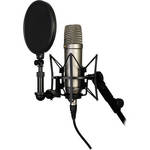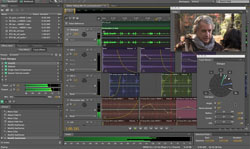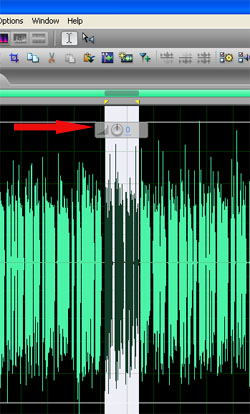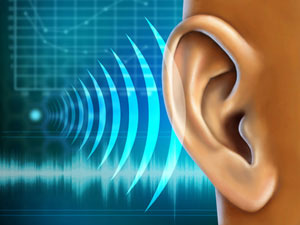 I just read this question: What does mastering a song mean? That’s a great question, actually. Here’s the answer: nobody knows. Nobody, that is, but a small and exclusive cabal whose members are sworn to keep the sacred arts a secret until their dying days. Well that’s what it feels like to me sometimes. Interviews with members of the cabal, I mean professional audio mastering community, always seem to hint (or sometimes outright state) that mere mortals could never understand the complexities and subtleties involved in actual mastering. I say “actual” because it is also hinted that what we mortals call mastering is laughably over-simplified, likened to cave people banging flint together to make fire.
I just read this question: What does mastering a song mean? That’s a great question, actually. Here’s the answer: nobody knows. Nobody, that is, but a small and exclusive cabal whose members are sworn to keep the sacred arts a secret until their dying days. Well that’s what it feels like to me sometimes. Interviews with members of the cabal, I mean professional audio mastering community, always seem to hint (or sometimes outright state) that mere mortals could never understand the complexities and subtleties involved in actual mastering. I say “actual” because it is also hinted that what we mortals call mastering is laughably over-simplified, likened to cave people banging flint together to make fire.
You know, now that I read the above paragraph out loud, I think it’s possible I underwent some sort of psychological trauma at the hands of a few non-representative individuals calling themselves mastering engineers several years ago. I’m led to understand that things are better now, and that they may never have been that bad even back then. OK, now that the air is cleared let’s talk about mastering a song.
A bit of history
In the old days before mp3 or CDs or even cassettes and 8-tracks, consumers pretty much had to rely on records to hear recorded music. Musicians would go to recording studios to record onto wide strips of magnetic tape that simply could not be played back on any consumer device (unless that consumer was someone like Les Paul…but that’s another story). So if the recording were ever to be heard by members of the public, the studio people had to have a way to make the audio go from those wide strips of tape onto a flat plastic (or rubber or shellac, depending on when we’re talking – see the wikipedia entry here) that normal people could play on their record players.
Actually, before there was magnetic tape, the recording engineers captured wound through recording “horns” which were hooked directly to a cutting stylus that would etch the disc directly. But when magnetic tape allowed the creation of a master disc (from which mass produced records were made) to occur at a time and place completely separated from the time and place of the recording, specialization began to occur. The recording studios focused on capturing the sound and separate facilities dedicated themselves to moving the audio on the non-consumer-playable tapes onto master discs, which were then used to create lots and lots of plastic discs people could play at home, and eventually in their cars, etc.
Much specialized equipment was used to optimize the audio from tapes for use on the master discs, which needed to be as fault-free as possible, since millions of records were going to made from this disc. Mastering engineers became experts at optimizing already-recorded audio such that it would sound its best when it reached consumer ears. That is why we still have mastering engineers today, and why mastering is still considered a separate process from recording and mixing.
Mastering engineers became experts at optimizing already-recorded audio such that it would sound its best when it reached consumer ears.
What kind of optimizing are we talking about here?
While recording and mixing is primarily concerned with capturing good tones and blending them properly, these processes are not always carried out in the most pristine of listening environments. And the ears of a mixing engineer are trained to make sure that the different sounds work and play well together. So these folks use effects like EQ, reverb, and compression, etc. to accomplish this. These engineers then send a mixed-down (see our article: What Does It Mean to Mix Down Audio?) version of the audio to a mastering house.
The mastering house has rooms that are designed to allow for totally unbiased listening, meaning that what the mastering engineer hears is as close as humanly possible to what is actually coming out of the speakers. Most regular listening spaces (especially the converted bedrooms of the intrepid home recordist) impart any number of changes to the sound so that what leaves the speakers (assuming they, themselves are reproducing what they get electronically) is not what reaches our ears.
So in addition to the finely tuned listening spaces, mastering facilities contain the best loud speakers and the best in equalization, compression and limiting tools. Armed with these tools in these rooms, engineers whose ears are as sensitive as the noses of wine connoisseur or perfume testers perform audio surgery to produce music that sounds good on as many devices in as many places as possible. They can make certain sounds or instruments be more easily heard, or do the opposite and make overbearing or undesirable frequencies less prominent. Remember, they aren’t working with a multi-track session, so they can’t just, say, turn the volume down on a bass guitar. The bass is already blended in with the kick drum, piano, voices, etc. They have to turn up or down these specific frequencies on the final mix using targeted EQ and multiple-band compression and other mastering tools.
At the end of the day
Sometimes, when the mix engineer is good, the mastering is minor surgery. But all to often they are sent audio that requires many hours of major surgery, or even miracles sometimes, to optimize audio for consumers. Such is the life of a mastering engineer.
In the end, a fully mastered version of the audio is, as it was in the old days, ready to be mass-produced and distributed.
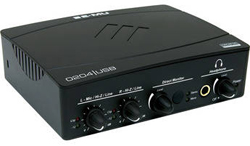



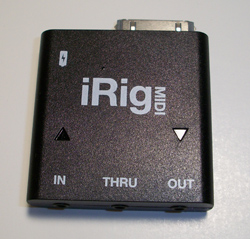 The main hardware is called ultra-compact on the
The main hardware is called ultra-compact on the 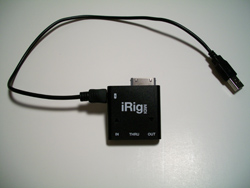
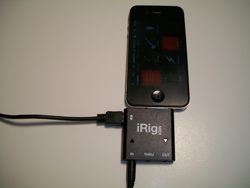 way my power cable. No problem I thought, I’ll simply plug the iRig MIDI cable into the Korg’s MIDI OUT jack and we’ll be in business. Not so. The iRig MIDI has a triangular light above both the MIDI IN and MIDI OUT ports to indicate when data is being went or received. With my Korg connected to the iRIG MIDI IN port, the light above that port should have been blinking red. I even went and got the the power cable for my Korg and hooked it up. Still no blinking red light. Next, I moved the switch on the back of the Korg. Still nothing. It wasn’t until I physically disconnected the USB cable on my Korg keyboard that the light started to blink. It would have been helpful to know this in advance, though it is not unreasonable for IK Multimedia not to have specs on every conceivable MIDI keyboard out there.
way my power cable. No problem I thought, I’ll simply plug the iRig MIDI cable into the Korg’s MIDI OUT jack and we’ll be in business. Not so. The iRig MIDI has a triangular light above both the MIDI IN and MIDI OUT ports to indicate when data is being went or received. With my Korg connected to the iRIG MIDI IN port, the light above that port should have been blinking red. I even went and got the the power cable for my Korg and hooked it up. Still no blinking red light. Next, I moved the switch on the back of the Korg. Still nothing. It wasn’t until I physically disconnected the USB cable on my Korg keyboard that the light started to blink. It would have been helpful to know this in advance, though it is not unreasonable for IK Multimedia not to have specs on every conceivable MIDI keyboard out there.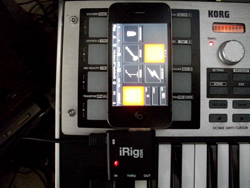 eTankFree app). Well, yours truly did figure this out for about an hour. I couldn’t figure out why I couldn’t play the sounds with my Korg keyboard, especially since I could hear the sounds using the Play button in the Sounds screen. After much confused frustration I noticed that the sounds I didn’t technically own were grayed out. Normally when something is grayed out on a computer screen, it means it cannot be selected or used in any way, which as I mentioned, was not the case with the SampleTank app. The grayed-out instrument sounds could both be selected AND heard if only to audition. Hence my confusion. When I finally selected one of the FREE sounds, voila! I was able to play the sounds with my Korg keyboard.
eTankFree app). Well, yours truly did figure this out for about an hour. I couldn’t figure out why I couldn’t play the sounds with my Korg keyboard, especially since I could hear the sounds using the Play button in the Sounds screen. After much confused frustration I noticed that the sounds I didn’t technically own were grayed out. Normally when something is grayed out on a computer screen, it means it cannot be selected or used in any way, which as I mentioned, was not the case with the SampleTank app. The grayed-out instrument sounds could both be selected AND heard if only to audition. Hence my confusion. When I finally selected one of the FREE sounds, voila! I was able to play the sounds with my Korg keyboard.